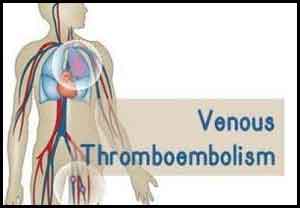- Home
- Editorial
- News
- Practice Guidelines
- Anesthesiology Guidelines
- Cancer Guidelines
- Cardiac Sciences Guidelines
- Critical Care Guidelines
- Dentistry Guidelines
- Dermatology Guidelines
- Diabetes and Endo Guidelines
- Diagnostics Guidelines
- ENT Guidelines
- Featured Practice Guidelines
- Gastroenterology Guidelines
- Geriatrics Guidelines
- Medicine Guidelines
- Nephrology Guidelines
- Neurosciences Guidelines
- Obs and Gynae Guidelines
- Ophthalmology Guidelines
- Orthopaedics Guidelines
- Paediatrics Guidelines
- Psychiatry Guidelines
- Pulmonology Guidelines
- Radiology Guidelines
- Surgery Guidelines
- Urology Guidelines
First Australasian guidelines for venous thromboembolism released

The first Australasian guidelines for the diagnosis and management of venous thromboembolism (VTE) and PE have been produced by a working group of experts in the area on behalf of the Thrombosis and Haemostasis Society of Australia and New Zealand The summary published has appeared online in the Medical Journal of Australia.
Venous thromboembolism (VTE), including deep vein thrombosis (DVT) and pulmonary embolism (PE), is the third most common cardiovascular disease and, globally, more than an estimated 10 million people have it yearly. It is a chronic and recurrent disease. The symptoms of VTE are non‐specific and the diagnosis should actively be sought once considered. The mainstay of VTE treatment is anticoagulation, with few patients requiring additional intervention.
Led by Associate Professor Huyen Tran, Head of the Haemostasis and Thrombosis Unit at Alfred Health and Monash University in Melbourne, a working group from the Thrombosis and Haemostasis Society of Australia and New Zealand developed the guidelines, which are available in full at https://www.thanz.org.au/resources/thanz-guidelines.
“In Australia, at least 17,000 people develop VTE each year (annual incidence, 0.83 per 1000 population),” Professor Tran and colleagues wrote.
“The lifetime risk of VTE is eight per cent, with one per cent of people aged over 80 years experiencing their first VTE.
“This disease is a major cause of health-related economic loss for the patient and the community (estimated to be $1.7 billion for Australia in 2008). It is a chronic and frequently recurrent disease.”
Coauthor Associate Professor Harry Gibbs, Deputy Director of General Medicine at Alfred Health, said three important new recommendations were for oral factor Xa inhibitors (rivaroxaban or apixaban) ‘upfront’ rather than injections of low molecular weight heparin; every VTE patient receives three months (six weeks for those with distal DVT) of anticoagulation with a decision then to be made about whether to continue long-term; and, that ‘low-intensity anticoagulation over the long term is both safe and effective and is suitable for many patients’.
The major change to guidelines was a recommendation to use a factor Xa inhibitor, such as rivaroxaban or apixaban, rather than warfarin for the treatment of acute VTE.
Main recommendations:
- The diagnosis of VTE should be established with imaging; it may be excluded by the use of clinical prediction rules combined with D‐dimer testing.
- Proximal DVT or PE caused by a major surgery or trauma that is no longer present should be treated with anticoagulant therapy for 3 months.
- Proximal DVT or PE that is unprovoked or associated with a transient risk factor (non‐surgical) should be treated with anticoagulant therapy for 3–6 months.
- Proximal DVT or PE that is recurrent (two or more) and provoked by active cancer or antiphospholipid syndrome should receive extended anticoagulation.
- Distal DVT caused by a major provoking factor that is no longer present should be treated with anticoagulant therapy for 6 weeks.
- For patients continuing with extended anticoagulant therapy, either therapeutic or low dose direct oral anticoagulants can be prescribed and is preferred over warfarin in the absence of contraindications.
- Routine thrombophilia testing is not indicated.
- Thrombolysis or a suitable alternative is indicated for massive (haemodynamically unstable) PE.
Changes in management as a result of the guideline: Most patients with acute VTE should be treated with a factor Xa inhibitor and be assessed for extended anticoagulation.
For further reference log on to :
https://www.thanz.org.au/documents/item/414

Disclaimer: This site is primarily intended for healthcare professionals. Any content/information on this website does not replace the advice of medical and/or health professionals and should not be construed as medical/diagnostic advice/endorsement or prescription. Use of this site is subject to our terms of use, privacy policy, advertisement policy. © 2020 Minerva Medical Treatment Pvt Ltd